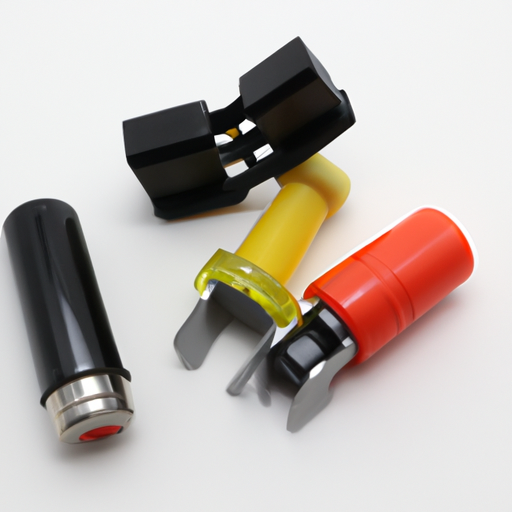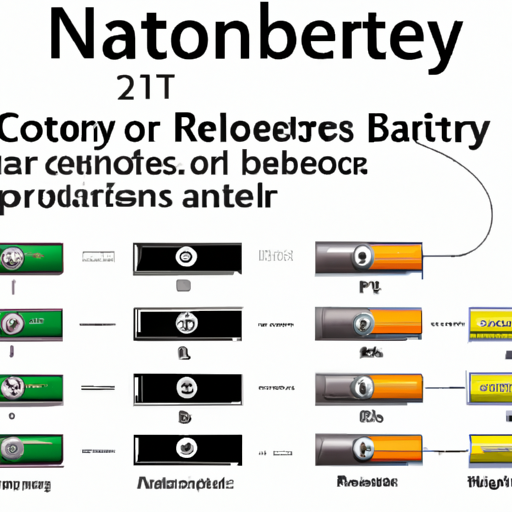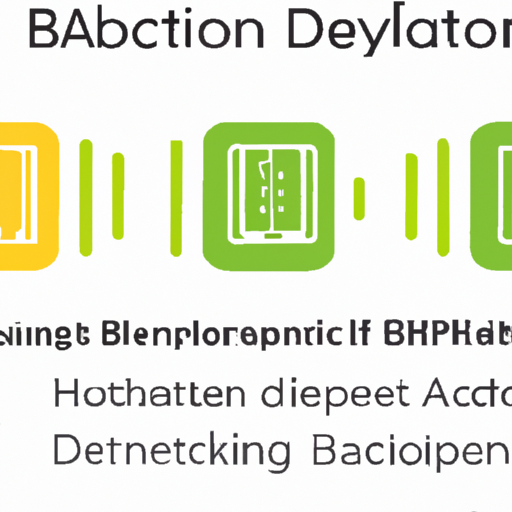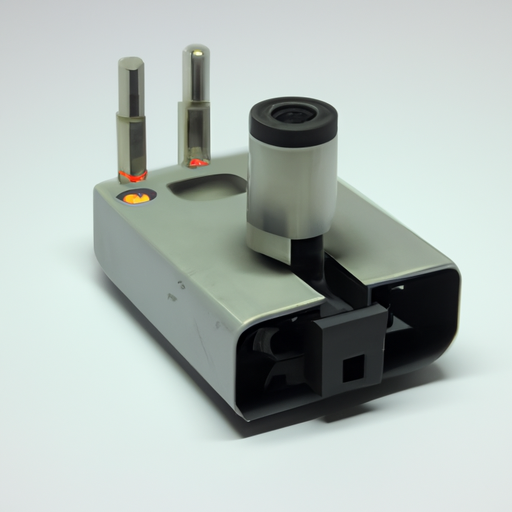What Components and Modules are Included in the Battery Holder Terminal?
I. Introduction
In the world of electronics, the battery holder terminal plays a crucial role in ensuring that devices receive the power they need to function effectively. A battery holder terminal is a component designed to securely hold batteries in place while providing a reliable electrical connection to the device's circuitry. Understanding the components and modules that make up a battery holder terminal is essential for anyone involved in electronics, whether you're a hobbyist, engineer, or manufacturer. This blog post will delve into the basic structure, key components, additional modules, types, applications, and future trends of battery holder terminals.
II. Basic Structure of a Battery Holder Terminal
A. Description of the Battery Holder
The battery holder is the primary structure that houses the battery. It is typically made from materials such as plastic or metal, chosen for their durability and electrical insulating properties. The design of battery holders can vary significantly, with common types including clips, trays, and snap-fit designs. Each design serves the same fundamental purpose: to securely hold the battery in place while allowing for easy insertion and removal.
B. Functionality of the Battery Holder
The primary function of a battery holder is to provide a secure placement for batteries, ensuring they do not move or disconnect during operation. Additionally, the battery holder facilitates an electrical connection to the device's circuitry, allowing power to flow from the battery to the electronic components. This dual functionality is critical for the reliable operation of any battery-powered device.
III. Key Components of a Battery Holder Terminal
A. Contacts
Contacts are essential components of a battery holder terminal, responsible for establishing an electrical connection between the battery and the device. There are various types of contacts, including spring-loaded and flat contacts. Spring-loaded contacts are designed to maintain pressure against the battery terminals, ensuring a consistent connection even as the battery discharges and its size changes slightly. Flat contacts, on the other hand, provide a stable connection but may require more precise alignment.
B. Terminals
Terminals are the points where the battery holder connects to the device's circuitry. They can be defined as the conductive points that facilitate the flow of electricity. There are several types of terminals, including solder, screw, and snap terminals. Solder terminals are permanently attached to the circuit board, while screw terminals allow for easy replacement of components. Snap terminals provide a quick and secure connection, making them popular in consumer electronics.
C. Insulation
Insulation is a critical component of battery holders, serving to prevent short circuits and protect users from electrical shock. The purpose of insulation is to separate conductive parts from each other and from the external environment. Common insulating materials used in battery holders include plastic, rubber, and ceramic. These materials are chosen for their ability to withstand heat and electrical stress while providing a barrier against accidental contact.
D. Housing
The housing of a battery holder plays a vital role in protecting the internal components and providing stability. It is typically made from durable materials such as plastic or metal, which can withstand physical stress and environmental factors. The housing also helps to maintain the alignment of the contacts and terminals, ensuring a reliable connection. In addition to protection, the housing design can influence the ease of battery replacement and the overall aesthetics of the device.
IV. Additional Modules and Features
A. Battery Management Systems (BMS)
Battery Management Systems (BMS) are advanced modules that monitor and manage the performance of batteries within a holder. A BMS ensures that batteries operate within safe parameters, preventing overcharging, deep discharging, and overheating. Integration with battery holders allows for real-time monitoring of battery health, enhancing the overall safety and longevity of the battery.
B. Safety Features
Safety is paramount in battery design, and many battery holders incorporate additional safety features. Fuses and circuit breakers are common safety components that protect against overcurrent situations, while thermal protection mechanisms prevent overheating. These features are especially important in applications where batteries are subjected to high loads or extreme conditions.
C. Indicators and Monitoring
Modern battery holders may also include indicators and monitoring modules to provide users with real-time information about battery status. LED indicators can signal when a battery is low or fully charged, while voltage and current monitoring modules can provide detailed insights into battery performance. These features enhance user experience and help in maintaining the health of the battery.
V. Types of Battery Holders
Battery holders come in various types, each designed for specific applications and battery configurations.
A. Single Cell Holders
Single cell holders are designed to accommodate one battery at a time. They are commonly used in small electronic devices, such as remote controls and flashlights, where space is limited.
B. Multi-Cell Holders
Multi-cell holders can accommodate multiple batteries, allowing for higher voltage and capacity configurations. These holders are often used in larger devices, such as power tools and portable electronics, where extended battery life is essential.
C. Specialty Holders
Specialty holders are designed for specific battery types, such as rechargeable batteries or coin cells. These holders may include unique features tailored to the specific requirements of the battery type, such as charging capabilities or compact designs.
D. Comparison of Different Types
When choosing a battery holder, it is essential to consider the specific requirements of the application. Single cell holders are ideal for compact devices, while multi-cell holders are better suited for applications requiring higher power. Specialty holders provide tailored solutions for unique battery types, ensuring optimal performance.
VI. Applications of Battery Holder Terminals
Battery holder terminals are used in a wide range of applications across various industries.
A. Consumer Electronics
In consumer electronics, battery holders are found in devices such as smartphones, tablets, and laptops. They provide a reliable connection for rechargeable batteries, ensuring that devices can be powered efficiently.
B. Automotive Applications
In the automotive industry, battery holders are used in key fobs, electronic control units, and other devices that require reliable power sources. The durability and safety features of battery holders are critical in automotive applications, where performance and reliability are paramount.
C. Industrial Equipment
Battery holders are also used in industrial equipment, such as portable tools and machinery. These applications often require robust battery holders that can withstand harsh conditions and provide consistent power.
D. Medical Devices
In the medical field, battery holders are essential for devices such as portable monitors and diagnostic equipment. The reliability and safety of battery holders are crucial in ensuring that medical devices function correctly and safely.
VII. Conclusion
In summary, battery holder terminals are vital components in electronic devices, providing secure battery placement and reliable electrical connections. Understanding the key components and modules, including contacts, terminals, insulation, and housing, is essential for anyone involved in electronics. Additionally, the integration of advanced features such as Battery Management Systems, safety mechanisms, and monitoring modules enhances the functionality and safety of battery holders.
As technology continues to evolve, the design and functionality of battery holder terminals will likely advance as well. Future trends may include the development of more compact and efficient designs, enhanced safety features, and improved integration with smart technologies. By staying informed about these trends, manufacturers and users can ensure that they are utilizing the best battery holder solutions for their applications.
VIII. References
A. Suggested Reading and Resources
- "Battery Technology Handbook" by H.A. Kiehne
- "Battery Management Systems for Large Lithium Ion Battery Packs" by Davide Andrea
B. Industry Standards and Guidelines
- IEC 62133: Safety requirements for portable sealed secondary cells
- UL 2054: Standard for Household and Commercial Batteries
By understanding the components and modules included in battery holder terminals, we can appreciate their significance in powering the devices we rely on every day.













